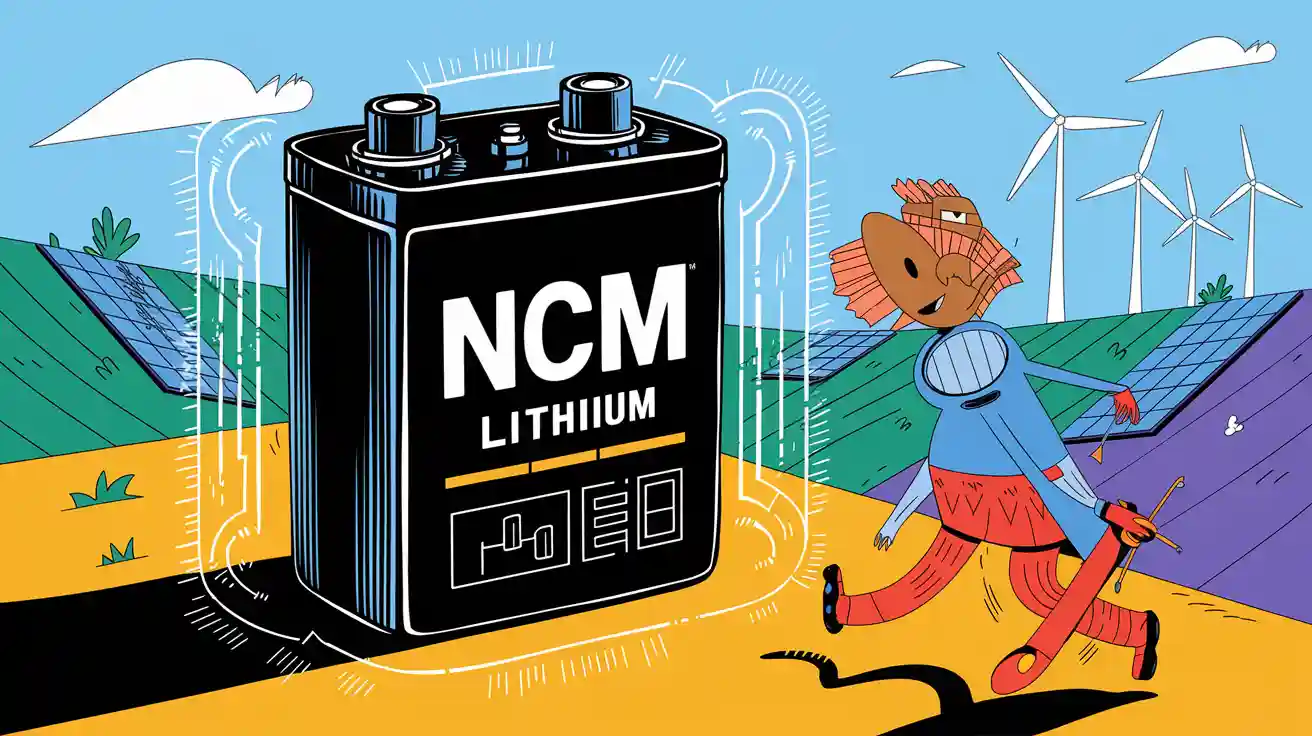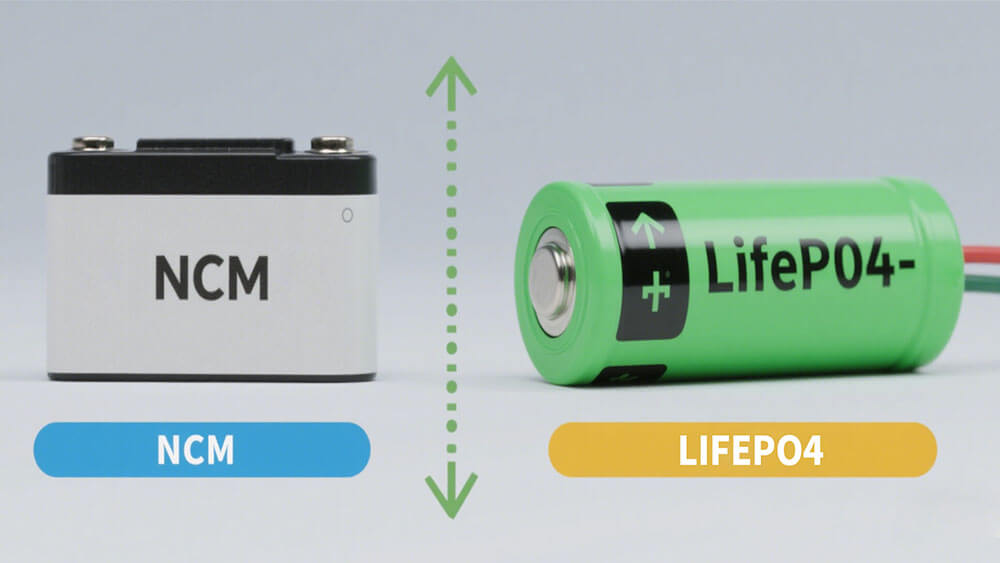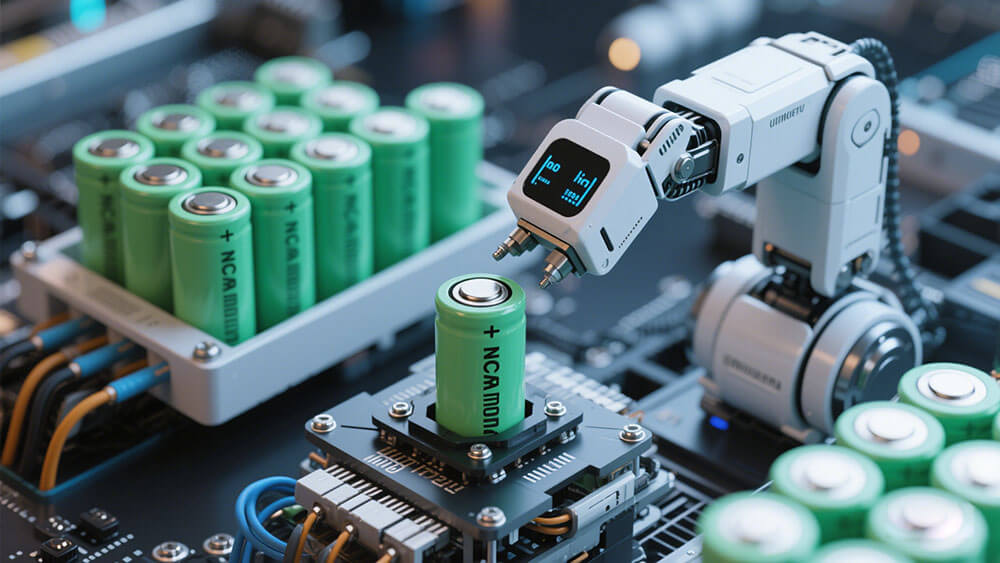
NCM lithium batteries, featuring Nickel, Cobalt, and Manganese in their cathode composition, have emerged as a pivotal component in contemporary energy solutions. Renowned for their high energy density, NCM lithium batteries are indispensable for cutting-edge energy storage systems and electric vehicle advancements. By 2025, the global market for lithium batteries utilized in liquid-cooled energy storage systems is anticipated to hit $15 billion, with an annual growth rate of 15%. This remarkable growth highlights the critical role of NCM lithium batteries in advancing renewable energy integration and achieving decarbonization objectives.
Key Takeaways
NCM lithium batteries use Nickel, Cobalt, and Manganese. They are important for storing energy and powering electric cars because they hold a lot of energy.
By 2025, NCM batteries will become much more popular. They will help with clean energy and reducing pollution.
NCM batteries store more energy and can be made in large amounts. This makes them great for factories and new energy ideas.
Part 1: Composition of NCM Lithium Batteries
1.1 Nickel: Enhancing Energy Density and Performance
Nickel plays a pivotal role in boosting the energy density of NCM lithium batteries. By increasing the nickel content in the cathode, you can achieve higher energy storage capacity, which is essential for applications requiring compact and efficient power solutions. For instance:
Ultrahigh-nickel layered cathodes can deliver a monomeric energy density of up to 545 Wh/kg.
Lithium-ion batteries with silicon anodes, combined with nickel-rich cathodes, reach approximately 404 Wh/kg.
Nickel-rich samples, such as NC95T, retain 91.2% of their energy after 300 cycles, significantly outperforming alternatives with lower nickel content.
This remarkable performance makes nickel-rich NCM batteries ideal for industries like electric vehicles and renewable energy storage, where high energy density is critical.
1.2 Manganese: Improving Stability and Safety
Manganese enhances the structural stability of NCM lithium batteries, ensuring reliable performance under demanding conditions. It strengthens the cathode material, reducing the risk of degradation during high-voltage charging. Research shows that manganese prevents the transition from layered to spinel or rock-salt phases during delithiation, which could otherwise hinder lithium-ion diffusion. This stability is crucial for maintaining safety and efficiency in energy storage systems.
1.3 Cobalt: Supporting Longevity and Reliability
Cobalt ensures the longevity and reliability of NCM lithium batteries by stabilizing the cathode and improving charge retention. Its benefits include:
Benefit | Description |
|---|---|
High energy density | Enables longer-lasting charge and compact size. |
Thermal stability | Reduces overheating risks and enhances safety. |
Charge retention | Prolongs battery life and sustains performance over time. |
Structural integrity | Minimizes degradation over continuous cycling, boosting battery lifespan. |
Cobalt also enhances electronic conductivity, ensuring efficient charge-discharge cycles. Its role in cathode formulations like lithium cobalt oxide (LCO) makes it indispensable for applications requiring compact and lightweight batteries, such as consumer electronics and electric vehicles.

Part 2: Comparison with Other Lithium-Ion Batteries
2.1 NCM vs. LiFePO4: Energy Density and Industrial Applications
When comparing NCM lithium batteries to LiFePO4 batteries, energy density and industrial applications stand out as key differentiators. NCM batteries offer a higher energy density due to their open interlayer structure, allowing lithium ions to move more freely. This makes them ideal for applications requiring compact and lightweight designs, such as electric vehicles and renewable energy storage systems. In contrast, LiFePO4 batteries, with their closely packed lattice, prioritize safety and stability, making them suitable for stationary energy storage and industrial applications.
Feature | NCM Batteries | LiFePO4 Batteries |
|---|---|---|
Energy Density | Higher due to open interlayer structure | Lower due to closely packed lattice |
Safety | Moderate | High |
Stability | Moderate | High |
Cost | Higher | Lower |
Cycling Longevity | 1,000-2,000 cycles | Up to 2,000-5,000 cycles |
Low-Temperature Performance | Better retention at low temperatures | Poor retention at low temperatures |
The market share of LiFePO4 remains strong due to its cost-effectiveness and safety. However, NCM batteries dominate sectors where high energy density is critical.
2.2 NCM vs. NCA: Cost Efficiency and Performance Metrics
NCM and NCA batteries share similarities in energy density but differ in cost efficiency and performance. NCA batteries, with a higher nickel content, achieve energy densities exceeding 300 Wh/kg, making them suitable for high-performance electric vehicles. NCM batteries, while slightly lower in energy density (180~230 Wh/kg), strike a balance between cost and performance, offering better affordability for large-scale applications.
Metric | NCM Battery | NCA Battery |
|---|---|---|
Energy Density | 180~230 Wh/kg | >300 Wh/kg |
Cycle Life | 1,000~2,000 cycles | 500-1,500 cycles |
Safety | Moderate | Higher risk of fire |
Low-Temperature Performance | 70.14% capacity at -20℃ | 54.94% capacity at -20℃ |
Cost | Lower | Higher |
NCM batteries provide a more cost-effective solution for industries requiring scalability, while NCA batteries cater to niche markets demanding peak performance.
2.3 Key Metrics: Scalability, Longevity, and Efficiency
Scalability, longevity, and efficiency are critical metrics when evaluating lithium-ion batteries. NCM batteries excel in scalability due to their compact design and high energy density, making them suitable for commercial energy solutions. Their longevity, with a cycle life of 1000-2000 cycles, supports applications requiring moderate durability. Additionally, NCM batteries outperform alternatives in lithium-ion diffusion rates and conductivity, as shown below:
Performance parameters | NCM | LiFePO4 | LMFP |
|---|---|---|---|
10⁻⁹ | 10⁻¹⁴ | 10⁻¹⁵ | |
Conductivity (S/cm) | 10⁻³ | 10⁻⁹ | 10⁻¹³ |
These metrics highlight why NCM lithium batteries remain a preferred choice for industries prioritizing efficiency and scalability.

Part 3: Advantages and Applications of NCM Lithium Batteries
3.1 High Energy Density for Industrial Solutions
The high energy density of NCM lithium batteries makes them a preferred choice for industrial applications. With energy densities ranging from 180 to 230 Wh/kg, these batteries deliver compact and efficient power solutions. This capability is essential for industries requiring portable and high-performance energy systems. For example, NCM batteries are widely used in robotics, where lightweight and powerful energy sources are critical for operational efficiency.
3.2 Longevity and Reliability for Energy Storage Systems
NCM lithium batteries excel in energy storage systems due to their longevity and reliability. Their long cycle life ensures consistent performance, making them ideal for storing renewable energy from sources like wind and solar. The following table highlights their key attributes:
Description | |
|---|---|
Energy Density | High energy density makes NCM batteries suitable for energy storage systems. |
Cycle Life | Long cycle life contributes to the longevity and reliability of NCM batteries. |
Application | Essential for storing excess energy from renewable sources like wind and solar. |
These features make NCM batteries a cornerstone of modern energy storage solutions, ensuring uninterrupted power supply and efficient energy utilization.
3.3 Scalability for Commercial Energy Solutions
The scalability of NCM lithium batteries positions them as a vital component in commercial energy solutions. Their design supports high-volume manufacturing, enabling seamless integration into large-scale projects. Key advancements include:
Development of scalable fabrication processes for safety-reinforced layers (SRL).
Adoption of roll-to-roll production techniques for high-volume manufacturing.
Use of a 500 L reactor to scale up polymer solution production, achieving outputs of up to 300 kg.
These innovations demonstrate the adaptability of NCM batteries for diverse commercial applications, from infrastructure projects to renewable energy grids. Explore more about infrastructure applications here.

Part 4: Importance of NCM Lithium Batteries in 2025
4.1 Role in Renewable Energy and Decarbonization Goals
NCM lithium batteries play a pivotal role in achieving renewable energy integration and decarbonization goals by 2025. Their high energy density makes them ideal for large-scale energy storage systems, which are essential for stabilizing grids and supporting renewable energy sources like wind and solar.
The demand for NCM batteries continues to rise due to their ability to store excess renewable energy efficiently.
Grid modernization initiatives further drive the adoption of NCM batteries, ensuring a reliable energy supply during peak demand.
Their advanced design supports decarbonization efforts by reducing reliance on fossil fuels and enabling cleaner energy solutions.
These batteries are critical for industries aiming to meet sustainability targets and transition to greener energy systems.
4.2 Advancements in Battery Technology and High-Nickel Designs
Technological advancements in high-nickel NCM designs significantly enhance battery performance. The NCM 811 configuration, with its higher nickel content, offers several benefits:
Improvement Type | NCM 811 Performance |
|---|---|
Weight Reduction | 15% lighter |
Lifespan Increase | 30% longer lifespan |
Energy Density | Higher than NCM 111 |
Fast Charging Capability | Enhanced performance |
These improvements make NCM batteries more efficient and cost-effective for applications requiring high energy output and durability. High-nickel designs also reduce cobalt dependency, aligning with global efforts to create sustainable and ethical supply chains.
4.3 Supporting Sustainability in Industrial Applications
NCM lithium batteries contribute significantly to sustainability in industrial applications. Research shows a 44.4% annual growth in studies related to NCM batteries over the past decade, reflecting their importance in electrification and wireless technologies. This growth aligns with the industry’s shift toward sustainable energy solutions.
East Asian countries, including China and South Korea, lead advancements in NCM battery technology. Their focus on innovation ensures that these batteries remain at the forefront of industrial sustainability efforts. By adopting NCM batteries, industries can reduce their carbon footprint and enhance operational efficiency. For more insights into sustainable practices, explore our sustainability initiatives.
NCM lithium batteries combine Nickel, Cobalt, and Manganese to deliver unmatched energy density, stability, and reliability. Their configurations, such as NCM811, offer high capacity and efficiency, making them indispensable for electric vehicles, renewable energy storage, and consumer electronics.
Composition | Advantages | Applications |
|---|---|---|
NCM333 | High capacity (150 mAh g-1) | Consumer electronics |
NCM622 | Enhanced energy density | Electric vehicles |
NCM811 | Capacity > 200 mAh g-1 | Renewable energy storage |
By 2025, these batteries will redefine energy storage and industrial technologies, driving innovation and sustainability. Explore custom solutions to meet your energy needs from Large Power.
FAQ
1. What makes NCM lithium batteries suitable for industrial applications?
NCM lithium batteries offer high energy density (180-230 Wh/kg) and scalability, making them ideal for industrial solutions like robotics, renewable energy storage, and electric vehicles.
2. How do NCM batteries compare to LiFePO4 batteries in energy storage?
NCM batteries provide higher energy density, while LiFePO4 batteries excel in safety and longevity. Choose NCM for compact designs and LiFePO4 for stationary storage.
3. Where can I find custom NCM battery solutions?
Large Power offers tailored NCM battery solutions for diverse applications, ensuring optimal performance and sustainability. Contact us today for expert consultation.




